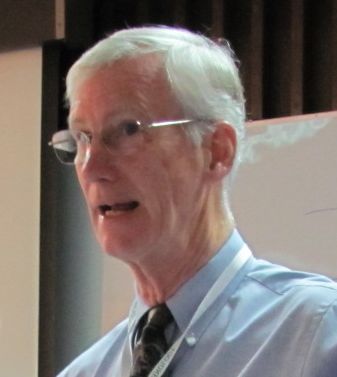This was the central message of a two-day workshop at AIT on
Results-based Management (RBM) facilitated by American RBM specialist
Dr. Frederick B. Williams of International Management Services Inc
(AIMS) located in Syracuse, New York. The workshop from 30-31 March was
tailor-made for senior administration officials, and included AIT
vice presidents, deans, faculty and directors as participants.
Results-based Management (RBM) facilitated by American RBM specialist
Dr. Frederick B. Williams of International Management Services Inc
(AIMS) located in Syracuse, New York. The workshop from 30-31 March was
tailor-made for senior administration officials, and included AIT
vice presidents, deans, faculty and directors as participants.
The Swedish International Development Cooperation Agency
(Sida)-sponsored workshop was part of its effort to integrate RBM into
its overall support for research. Specifically designed by AIMS for
Sida’s research cooperation partners, the workshop provided an overview
of each component of RBM and the simplified log frame matrix.
(Sida)-sponsored workshop was part of its effort to integrate RBM into
its overall support for research. Specifically designed by AIMS for
Sida’s research cooperation partners, the workshop provided an overview
of each component of RBM and the simplified log frame matrix.
Swedish research cooperation aims to contribute to Sida’s goal of
poverty alleviation by strengthening research capacity in low-income
countries by supporting greater use of the results of research
conducted at national, regional and global levels for development
purposes, Dr. Williams said.
poverty alleviation by strengthening research capacity in low-income
countries by supporting greater use of the results of research
conducted at national, regional and global levels for development
purposes, Dr. Williams said.
“Research for research’s sake is no longer considered valid. It must
have a valid purpose and produce results that are picked-up in order to
gain financial support,” Dr. Williams stressed.
have a valid purpose and produce results that are picked-up in order to
gain financial support,” Dr. Williams stressed.
The connection between research and major development issues is also
becoming clearer all the time, he added, and AIT ought to apply RBM as
a tool to direct and manage its research work, be it in its traditional
academic settings or in its research program networks.
becoming clearer all the time, he added, and AIT ought to apply RBM as
a tool to direct and manage its research work, be it in its traditional
academic settings or in its research program networks.
Apart from aiding senior administrators to become RBM-savvy
practitioners, the training was also an instrumental way for the
Institute to layout its own process for developing a comprehensive
research strategy proposal for Sida which is based on results-based
management.
practitioners, the training was also an instrumental way for the
Institute to layout its own process for developing a comprehensive
research strategy proposal for Sida which is based on results-based
management.
Results-based Management is an internationally-recognized management
practice for assisting strategic planners and managers in all phases of
the management cycle – from initial program planning, to
implementation, and to evaluation and reporting. RBM places a maxim on
achieving those results that make a difference.
practice for assisting strategic planners and managers in all phases of
the management cycle – from initial program planning, to
implementation, and to evaluation and reporting. RBM places a maxim on
achieving those results that make a difference.
Results refer to three specific programming elements: objectives,
outcomes and outputs. “Outcomes are like the ripple effect of a stone
dropped in water,” Dr. Williams said, emphasizing that they must also
be “SMART” or “specific, measurable, achievable, relevant, and
timely”.
Dr. Williams was assisted by co-facilitator Dr. Pritam Shrestha, Head,
External Relations and Communications Office, AIT. Both agreed that RBM
starts with working from the highest-level results to identify
objectives, then outcomes needed to achieve the objectives, and finally
outputs needed to achieve the outcomes.
AIT President Said Irandoust, who was himself a workshop participant,
said the RBM training for AIT staff was also a key way to
support the implementation of AIT’s Strategy 2013. RBM was
identified in AIT’s five-year strategic plan as a key management
practice to be undertaken and applied across the Institute, he
said.
said the RBM training for AIT staff was also a key way to
support the implementation of AIT’s Strategy 2013. RBM was
identified in AIT’s five-year strategic plan as a key management
practice to be undertaken and applied across the Institute, he
said.


